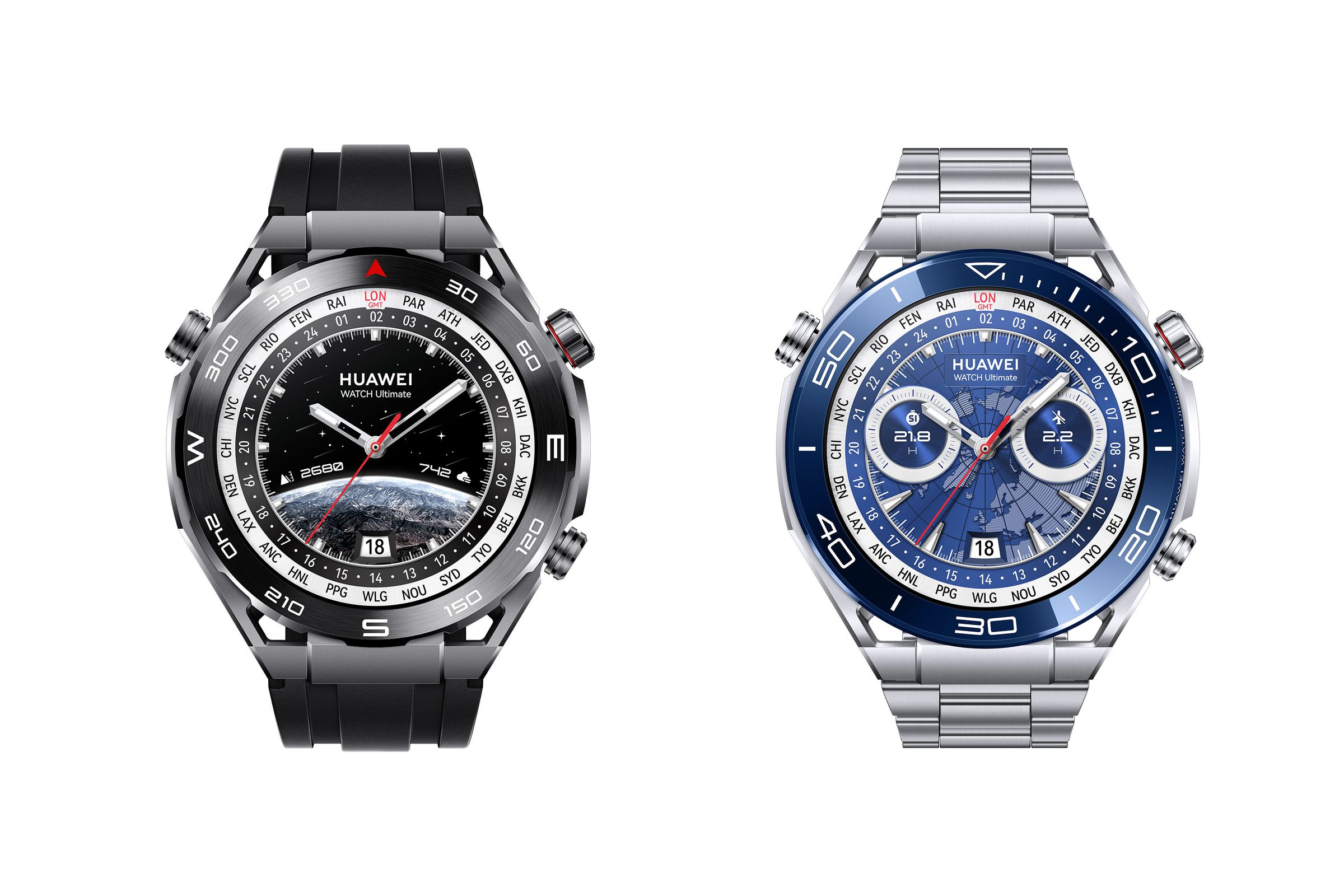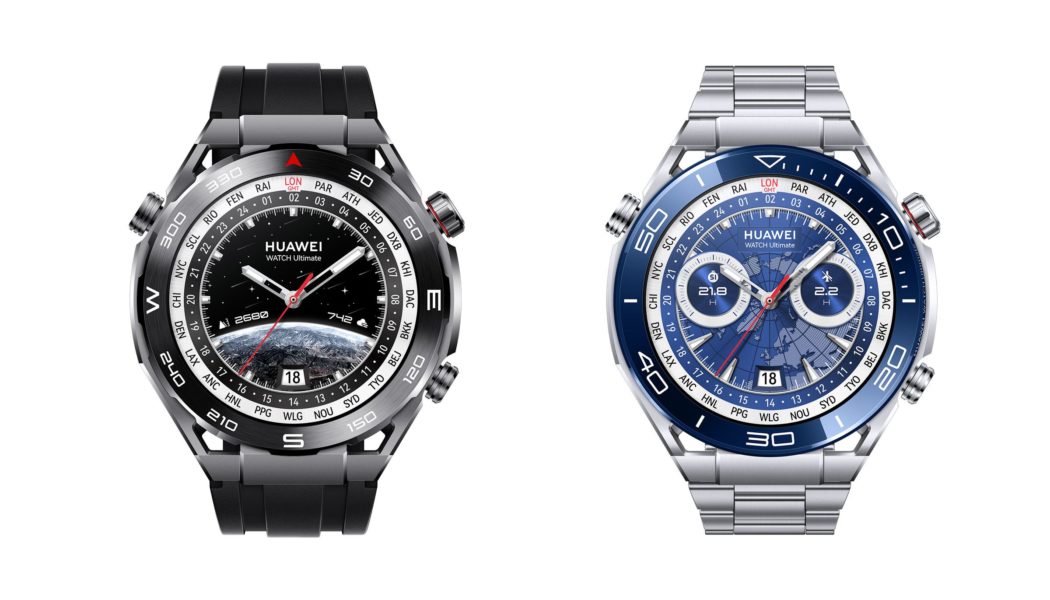The Watch Ultimate has a diving and expedition mode, multiband GPS, a new physical button, a backtrack feature, a night mode, and a forthcoming low-power mode. Hmm, where have I seen this before?

You don’t need to be Sherlock Holmes to figure out where Huawei got the inspiration for its newly announced Watch Ultimate. It’s clearly Huawei’s not-so-subtle answer to the Apple Watch Ultra, and now, we know that similarity extends to the price tag, too. Starting tomorrow, the Ultimate will retail in the UK and Europe for €749 / £700 for the “expedition black” colorway and €899 / £800 for the voyage blue version.
If you missed news of the Watch Ultimate, it’s likely because the company currently has no plans to launch the device in the US. (That Huawei ban is still kicking in 2023.) While the company once had a decent foothold in the wearable market, the ban has since limited its reach to US audiences for all but the most dedicated of users. That said, here’s a quick rundown of the features.
- Niche diving and expedition (i.e., hiking, backpacking, etc.) features, including safety stops and decompression reminders.
- A new physical button that users can press to launch directly into said diving and expedition modes.
- A night mode watch face, which puts bright orange text on an all-black background so you can more easily read in the dark.
- Dual-frequency GPS.
- “Marking points” to help you log points of interest and find your way back when on a trail.
- A forthcoming update will add custom and “intelligent power management” for longer battery life.
- An extra long watch strap for diving.
Every single one of these is a feature Apple introduced on the Ultra, but to be fair, the Ultimate is different enough that you can’t call it a complete knockoff. That’s at least evident in the design, which hews much closer to traditional mechanical watches. There are differences within the specs and materials as well. The Watch Ultimate, for instance, uses a “zirconium-based liquid metal case” which it claims is 4.5 times stronger and 2.5 harder than stainless steel. It’s not titanium, unlike the Ultra, but the implication of extreme ruggedness is the same.(It’s also, obviously, not liquid.) Both have nanotech ceramic bezels and sapphire glass on the LTPO OLED displays.
Huawei is also keen to one-up Apple in some areas. Like the Ultra, the Watch Ultimate has been EN13319-certified, which is the standard for diving equipment. But while Apple doesn’t recommend dives beyond 40 meters, Huawei says the Watch Ultimate can go down to 110 meters and supports technical and free dives in addition to recreational dives.
Battery life is also much longer. Huawei claims the Watch Ultimate can get up to two weeks off a single charge, though it didn’t get into what parameters it used to arrive at that estimate. As always with smartwatches, your battery mileage will vary with usage. That said, Huawei noted that users can go from zero to 100 percent battery in 60 minutes and 25 percent in 10 minutes.
Huawei’s proprietary OS doesn’t have the most robust app ecosystem, but there is some improvement on that front, too. Huawei says that users will now be able to use Strava, Komoot, and Runtastic third-party integrations. It’s not quite the same as having the app on your wrist, but it makes sharing data between those services much easier.
Regardless of how you feel about Huawei, the Watch Ultimate is the closest competitor to the Apple Watch Ultra in a single smartwatch — at least on paper. Garmin has a few options, like the Epix 2 and Fenix 7 lineup, but those are more rugged fitness watches than aspirational luxury smartwatches. It’d be nice if everyone had more options on that front, but if you’re in the US, there’s no official way to get the watch through US retailers. Otherwise, you’ll likely have to wait to see what Samsung and other Wear OS watchmakers have up their sleeves.









